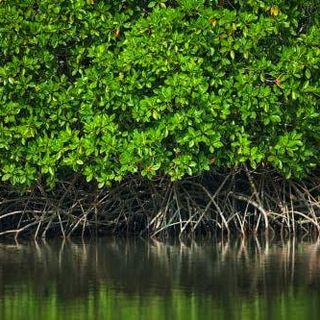The United Nations Environment Programme (UNEP) introduced a report exploring how seagrass ecosystems can be a powerful nature-based climate solution in a world ravaged by the Covid19 pandemic.
Titled Out of the Blue: The Value of Seagrasses to the Environment and to People, UNEP published the report in collaboration with its World Conservation Monitoring Centre, and GRID-Ardenal, a Norwegian non-profit environmental communications centre. Through its first-ever report highlighting the importance of seagrass ecosystems to the environment, as well as to human communities across the globe, the UN also attempted to raise awareness about the vulnerability of what it called a “critical but often undervalued marine ecosystem.” Seagrass ecosystems can help strengthen economies as well by boosting the fishing and tourism industries, the authors believe.
Seagrasses are marine flowering plants found along the coast on all continents except Antarctica, in clear, shallow waters that allow light for photosynthesis. Under suitable conditions, seagrasses can also form dense underwater meadows. These seagrass meadows are among the most common coastal habitats on Earth, covering almost 300,000 square kilometres across 159 countries. Besides nurturing fish populations and being home to endangers species of seahorses and sea-turtles, these meadows can also weaken storm surges, thereby reducing the harm caused by natural disasters in coastal areas. Seagrasses can filter pathogens, bacteria, and even pollutants out of seawater. Moreover, in a world dealing with alarming degrees of global warming, seagrasses acting as highly efficient carbon sinks can be especially useful. The report says that although seagrasses cover only 0.1 percent of the planet’s ocean floor, these meadows store up to 18 percent of the world’s oceanic carbon.
Related on The Swaddle:
Sixth Mass Extinction Of Wildlife Looms, Warn Scientists
However, despite their endless list of wide-ranging benefits, almost seven percent of seagrass habitat is lost worldwide each year with, at least, 22 of Earth’s 72 seagrass species currently in decline. “Seagrasses are the super ecosystems of our oceans, providing an incredible range of benefits topeople around the world. Yet, while their flashier counterparts attract more attention, they remain among the most unheralded aquatic environments on Earth,” Dr. Maria Potouroglou, seagrass scientist at GRID-Arendal and the lead editor of the report, lamented. The report highlights how seagrasses are among the least protected coastal habitats: only 26 per cent of recorded seagrass meadows fall within Marine Protected Areas compared with 40 per cent of coral reefs and 43 per cent of mangroves.
In a bid to address this, the UNEP delved into the major threats to the seagrass ecosystems, which primarily include agricultural and industrial run-off, coastal development and climate change, besides unregulated fishing activities, anchoring, trampling and dredging. However, the researchers are hopeful that human interventions aimed to reduce these man-made stress-factors on the environment can not only keep the decline and destruction of seagrass ecosystems in check, but also increase the possibilities of their substantial recovery. This led the organization to urge policy-makers to devote their resources towards the conservation and restoration of seagrasses.
“In light of everything seagrasses do for people and nature, protecting and restoring them is vital. It is time to boost the profile of this underappreciated marine ecosystem and shine a spotlight on the many ways that seagrasses can help us solve our biggest environmental challenges”, Ronald Jumeau, Permanent Representative to the UN, and the Seychellois Ambassador for Climate Change, appealed in the preface to the report.




